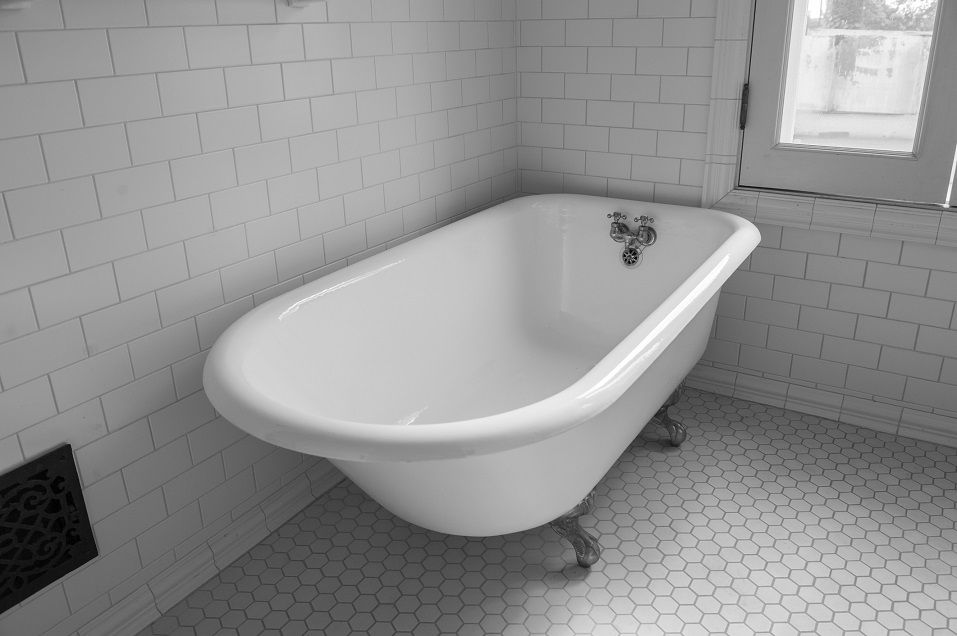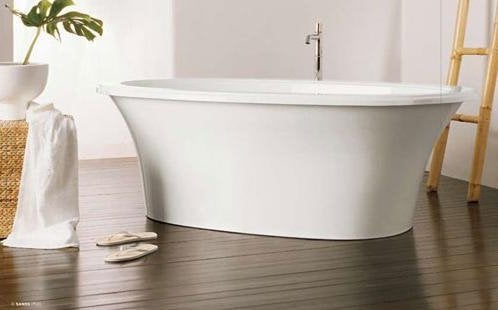How To Replace A Tub (For Beginners).
How To Replace A Tub (For Beginners).
Blog Article
Presented here in the next paragraph you'll find some worthwhile information around A Step-by-Step Guide to Installing a Bathtub.

Installing a bathtub isn't precisely rocket science, yet it does need solid plumbing, woodworking, as well as sometimes, tiling abilities. Changing an old bathtub with a brand-new one is also a reasonably challenging project. If the old bathtub is easily accessible, the task can move speedily; if you need to open a wall to eliminate the old tub and also position the brand-new tub, the task is a lot harder. In either case, the job is within a home handyman's abilities, although you will certainly need an assistant to leave the old bathtub and embeded in the new one. Make certain you have certified yourself for the work and fit attempting it. Instead of hiring a specialist to take control of a halfway-completed job, it is far better to think about using one before you start. Chances are you may require a professional plumber to make tube links.
This write-up will certainly assist you set up a new bathtub in your washroom if you have actually currently gotten a new tub and do not require to alter the arrangement of your previous water pipelines.
Your tools as well as product list should comprise the following:
Planning for the Installment
Firstly, the supporting framework provided with the bathroom needs to be fitted (if called for) according to the maker's guidelines. Next off, fit the faucets or mixer to the bathtub. When fitting the tap block, it is essential to make certain that if the faucet features a plastic washing machine, it is fitted in between the bathroom and the taps. On a plastic bathroom, it is likewise sensible to fit a supporting plate under the faucets unit to prevent stress on the bath tub.
Fit the flexible tap connectors to the bottom of the two taps using 2 nuts as well as olives (in some cases supplied with the bathtub). Fit the plug-hole electrical outlet by smearing mastic filler round the sink electrical outlet opening, and afterwards pass the outlet via the hole in the bath. Utilize the nut supplied by the manufacturer to fit the plug-hole. Take a look at the plug-hole outlet for an inlet on the side for the overflow pipeline.
Next off, fit the end of the adaptable overflow pipe to the overflow outlet. After that, screw the pipe to the overflow face which should be fitted inside the bathroom. See to it you make use of every one of the provided washers.
Connect the catch to the bottom of the waste electrical outlet on the tub by winding the thread of the waste outlet with silicone mastic or PTFE tape, as well as screw on the catch to the electrical outlet. Attach all-time low of the overflow tube in a comparable manner.The bathroom should currently prepare to be fitted in its final position.
Removing Old Touches
If you require to replace old taps with brand-new ones as a part of your installation, after that the first thing you need to do is separate the water supply. After doing so, turn on the taps to drain pipes any water continuing to be in the system. The process of removing the existing faucets can be quite bothersome because of the restricted gain access to that is frequently the situation.
Use a container wrench (crowsfoot spanner) or a faucet device to undo the nut that links the supply pipes to the taps. Have a towel all set for the staying water that will come from the pipelines. When the supply pipelines have been removed, make use of the exact same tool to loosen the nut that holds the taps onto the bath/basin. You will need to quit the single taps from turning during this process. When the taps have been removed, the holes in the bath/basin will have to be cleaned of any old securing substance.
Before moving on to fit the new faucets, contrast the pipeline links on the old faucets to the brand-new faucets. If the old faucets are longer than the brand-new taps, after that a shank adapter is required for the new faucets to fit.
Mounting the Bathtub
Using the two wood boards under its feet, position the bath tub in the required position. The wooden boards are practical in uniformly spreading out the weight of the bathtub over the area of the boards as opposed to focusing all the weight onto 4 small points.
The next objective is to guarantee that the tub is leveled all round. This can be achieved by inspecting the level and changing the feet on the tub till the spirit level checks out degree.
To install faucets, fit the bottom of the outermost versatile faucet connector to the ideal supply pipe by making a compression join; after that do the same for the various other tap.
Turn on the water supply as well as examine all joints as well as new pipework for leakages and tighten them if required. Load the bathtub and additionally examine the overflow outlet as well as the normal electrical outlet for leakages.
Lastly, deal with the bath paneling as defined in the maker's instruction manual. Tiling and also sealing around the tub should wait up until the bathtub has actually been made use of a minimum of when as this will resolve it right into its last position.
Suitable New Taps
If the tails of the brand-new faucets are plastic, then you will certainly need a plastic port to stop damage to the string. One end of the adapter fits on the plastic tail of the tap and also the various other end provides a connection to the existing supply pipelines.
If you require to fit a monobloc, after that you will require decreasing couplers, which links the 10mm pipeline of the monobloc to the typical 15mm supply pipeline.
Next off, place the faucet in the mounting hole in the bath/basin guaranteeing that the washers are in location between the faucet as well as the sink. Safeguard the faucet in position with the supplier given backnut. Once the tap is securely in place, the supply pipes can be linked to the tails of the taps. The taps can either be linked by using corrugated copper piping or with normal tap adapters. The previous type ought to be connected to the tap finishes initially, tightening up only by hand. The supply pipes can later on be attached to the various other end. Tighten both ends with a spanner after both ends have been attached.
Tiling Around the Tub
In the area where the bathroom fulfills the ceramic tile, it is required to seal the accompanies a silicone rubber caulking. This is very important as the fitting can relocate sufficient to split a rigid seal, causing the water to permeate the wall between the bathroom and the tiling, leading to issues with moisture and also feasible leaks to the ceiling listed below.
You can select from a variety of coloured sealers to blend in your fixtures and also fittings. They are marketed in tubes as well as cartridges, and can sealing voids as much as a size of 3mm (1/8 inch). If you have a bigger space to fill up, you can load it with twists of drenched paper or soft rope. Bear in mind to always load the bath tub with water before securing, to allow for the motion experienced when the bathtub remains in use. The sealant can split rather early if you do not think about this movement prior to securing.
Additionally, ceramic coving or quadrant ceramic tiles can be made use of to border the bath or shower tray. Plastic strips of coving, which are easy to use as well as reduce to size, are likewise conveniently available on the marketplace. It is advisable to fit the ceramic tiles making use of water-resistant or water resistant glue and grout.
Bathtub Installation
How Important Is A Bathtub To Your Home?
High-quality baths, showers, and other bathroom updates are necessary when considering a smart investment in your home. It’s a room that you go to every day and one that is constantly being used by guests.The bathroom is one of the top trafficked rooms in a home and also one of the most valuable in terms of home resale.
Install Piping Before Tub
You will be using your existing drain and waste vent system, but pipes required include the hot and cold water supply lines and a pipe leading to a shower head. A mixing valve and shower head are also needed. Air chambers may be required.
Position the Tub
Lower the tub into place so that the continuous flange fits against the wall studs and rests on 1’x4' or 2’x4' supports. Anchor the tub to the enclosure with nails or screws inserted through the flanges into the studs.
NOTE: Remember, bathtubs and shower stalls may require support framing. A bathtub filled with water is extremely heavy, so check building codes and framing support before installing the tub.
Assemble Drain Connections
Assemble the bathtub drain connections by connecting the tub overflow with the tub drain above the trap, not beyond it. The trap will have a compression fitting that screws over the arm of the overflow assembly.
Place a Pipe For the Shower Head
First, locate a brass female threaded winged fitting and attach it to a framing support via a screw or a nail. Then run a pipe up the wall for the shower head. Sweat or solder the other side of the brass fitting to the top of the pipe.
Attaching Hot and Cold Water Lines
Attach your water lines for both hot and cold by sweating these directly into the hot and cold ports of the mixing valve. The mixing valve will be how water enters the tub’s system, not by the pipes themselves.
Install the Spout
Extend a piece of 1/2 inch pipe, or whichever length is specified in the manufacturer’s instructions, for the tub spout. Sweat on a male threaded fitting at the end of the pipe or use a brass nipple of the proper length and a 1/2 inch cap.
NOTE: At this point you should have your rough-in plumbing work inspected before proceeding further.
Check For Leaks
Restore the water pressure and check the drain connection and the supply pipes for any sign of leaking.
estore the Bathroom Wall
Replace the wall with moisture-resistant drywall as a base for your wall covering. Seal the joints between the wall and your new tub with silicone caulk as protection against water seepage.
https://www.berkeys.com/2016/12/02/bathtub-installation-dallas/

I have been very inquisitive about Installing A Bathtub and I hope you enjoyed my blog posting. Sharing is good. Helping people is fun. Thanks a lot for your time. Come back soon.
Book Today! Report this page